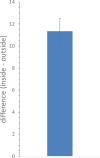Predicting the distributions of Egypt's medicinal plants and their potential shifts under future climate change
- PMID: 29136659
- PMCID: PMC5685616
- DOI: 10.1371/journal.pone.0187714
Predicting the distributions of Egypt's medicinal plants and their potential shifts under future climate change
Abstract
Climate change is one of the most difficult of challenges to conserving biodiversity, especially for countries with few data on the distributions of their taxa. Species distribution modelling is a modern approach to the assessment of the potential effects of climate change on biodiversity, with the great advantage of being robust to small amounts of data. Taking advantage of a recently validated dataset, we use the medicinal plants of Egypt to identify hotspots of diversity now and in the future by predicting the effect of climate change on the pattern of species richness using species distribution modelling. Then we assess how Egypt's current Protected Area network is likely to perform in protecting plants under climate change. The patterns of species richness show that in most cases the A2a 'business as usual' scenario was more harmful than the B2a 'moderate mitigation' scenario. Predicted species richness inside Protected Areas was higher than outside under all scenarios, indicating that Egypt's PAs are well placed to help conserve medicinal plants.
Conflict of interest statement
Figures





Similar articles
-
Predicting the future impact of climate change on the distribution of species in Egypt's mediterranean ecosystems.BMC Plant Biol. 2025 May 15;25(1):644. doi: 10.1186/s12870-025-06630-7. BMC Plant Biol. 2025. PMID: 40375130 Free PMC article.
-
Protected areas offer refuge from invasive species spreading under climate change.Glob Chang Biol. 2017 Dec;23(12):5331-5343. doi: 10.1111/gcb.13798. Epub 2017 Jul 31. Glob Chang Biol. 2017. PMID: 28758293
-
Impacts of climate change on distributions and diversity of ungulates on the Tibetan Plateau.Ecol Appl. 2015 Jan;25(1):24-38. doi: 10.1890/13-1499.1. Ecol Appl. 2015. PMID: 26255355
-
Climate change and freshwater biodiversity: detected patterns, future trends and adaptations in northern regions.Biol Rev Camb Philos Soc. 2009 Feb;84(1):39-54. doi: 10.1111/j.1469-185X.2008.00060.x. Epub 2008 Nov 11. Biol Rev Camb Philos Soc. 2009. PMID: 19032595 Review.
-
Conserving the zoological resources of Bangladesh under a changing climate.Integr Zool. 2009 Jun;4(2):213-219. doi: 10.1111/j.1749-4877.2009.00149.x. Integr Zool. 2009. PMID: 21392291 Review.
Cited by
-
Phytomedicine from Middle Eastern Countries: An Alternative Remedy to Modern Medicine against Candida spp Infection.Evid Based Complement Alternat Med. 2021 Jul 14;2021:6694876. doi: 10.1155/2021/6694876. eCollection 2021. Evid Based Complement Alternat Med. 2021. PMID: 34335836 Free PMC article. Review.
-
Distribution Patterns of Platycodon grandiflorus From the Last Interglacial Period to the Future by Ecological Niche Modeling.Ecol Evol. 2025 Mar 30;15(4):e71198. doi: 10.1002/ece3.71198. eCollection 2025 Apr. Ecol Evol. 2025. PMID: 40170830 Free PMC article.
-
The contemporary nexus of medicines security and bioprospecting: a future perspective for prioritizing the patient.Nat Prod Bioprospect. 2024 Jan 25;14(1):11. doi: 10.1007/s13659-024-00431-5. Nat Prod Bioprospect. 2024. PMID: 38270809 Free PMC article. Review.
-
Analyzing the distribution patterns and dynamic niche of Magnolia grandiflora L. in the United States and China in response to climate change.Front Plant Sci. 2024 Oct 22;15:1440610. doi: 10.3389/fpls.2024.1440610. eCollection 2024. Front Plant Sci. 2024. PMID: 39502915 Free PMC article.
-
Predicting the dynamic distribution of Sphagnum bogs in China under climate change since the last interglacial period.PLoS One. 2020 Apr 6;15(4):e0230969. doi: 10.1371/journal.pone.0230969. eCollection 2020. PLoS One. 2020. PMID: 32251486 Free PMC article.
References
-
- Hannah L. Climate Change Biology: Elsevier Ltd; 2011.
-
- Regos A, D’Amen M, Herrando S, Guisan A, Brotons L. Fire management, climate change and their interacting effects on birds in complex Mediterranean landscapes: dynamic distribution modelling of an early-successional species—the near-threatened Dartford Warbler (Sylvia undata). Journal of Ornithology. 2015;156:275–86. doi: 10.1007/s10336-015-1174-9 - DOI
-
- Parmesan C, Yohe G. Aglobally coherent fingerprint of climate change impacts across natural systems. Nature. 2003;421:37–42. doi: 10.1038/nature01286 - DOI - PubMed
-
- Thomas CD, Cameron A, Green RE, Bakkenes M, Beaumont LJ, Collingham YC, et al. Extinction risk from climate change. Nature. 2004;427:145–8. doi: 10.1038/nature02121 - DOI - PubMed
-
- Thuiller W. Patterns and uncertainties of species' range shifts under climate change. Global Change Biology. 2004;10(12):2020–7. doi: 10.1111/j.1365-2486.2004.00859.x - DOI - PMC - PubMed
MeSH terms
LinkOut - more resources
Full Text Sources
Other Literature Sources
Medical

